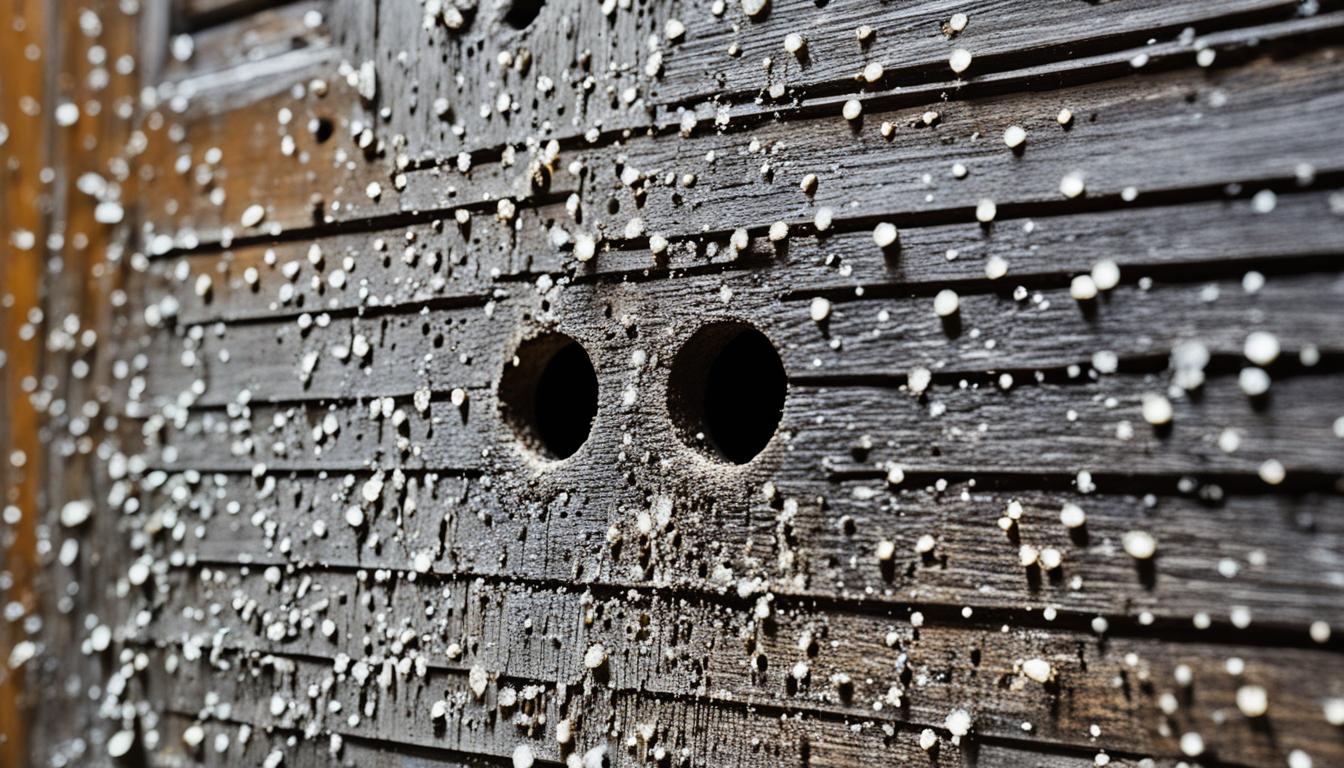Discovering termites in your home can be a distressing experience. These tiny pests have the potential to cause significant damage to your property if left untreated. Taking immediate action when termites are spotted is crucial to protect your home and preserve its value.
Termite infestations can quickly escalate, leading to widespread destruction. Delaying treatment can result in costly repairs and compromise the structural integrity of your home. To safeguard your investment, it is essential to understand the signs of termite infestation, their behavior, and the consequences of not taking quick action.
In this article, we will explore the signs of a termite infestation, delve into termite behavior, and discuss the potential consequences of delaying treatment. We will also provide practical steps to address a termite infestation and offer long-term strategies for termite control and prevention.
Protecting your property from termite damage requires prompt and proactive measures. By taking immediate action upon sighting termites, you can minimize the risk of extensive infestation and protect the value of your home.
Key Takeaways:
- Termites can cause significant damage to your home if left untreated.
- Delaying treatment can lead to costly repairs and compromise the structural integrity of your property.
- Identifying the signs of termite infestation is crucial for early detection and intervention.
- Understanding termite behavior can provide insights into the severity of the infestation and potential damage.
- Taking immediate steps such as contacting a professional pest control service is crucial to address a termite infestation.
Signs of Termite Infestation
When it comes to termite infestations, early detection is key. Recognizing the signs of a termite problem in your home can help you take prompt action and minimize potential damage. Here are some common signs to look out for:
- Mud Tubes: These pencil-sized tubes are often found along the foundation of your home or on exterior walls. Termites use these tubes to navigate and protect themselves from predators.
- Discarded Wings: Swarmers, or mature termites, often shed their wings after finding a new nesting site. If you notice piles of wings near windowsills, doorways, or other access points, it may indicate a termite infestation.
- Wood Damage: Termites feed on wood from the inside out, leaving behind hollowed-out or damaged wood. Check for sagging floors, crumbling baseboards, or buckling wooden structures as signs of termite activity.
- Tight-Fitting Doors and Windows: As termites consume wood, they can cause doors and windows to become difficult to open or close. If you’re experiencing unusual resistance when using these entry points, it could be due to termite damage.
- Noise: In some cases, you may be able to hear termites clicking or munching on wood. If you notice any unusual sounds coming from within walls or wooden structures, it’s worth investigating further.
By staying vigilant and recognizing these signs of termite infestation, you can take immediate action to protect your home and prevent further damage. If you suspect a termite problem, it’s crucial to contact a professional pest control service to assess the situation and recommend the appropriate treatment.
Understanding Termite Behavior
When dealing with a termite infestation, it’s crucial to understand the behavior and habits of these destructive pests. By gaining insight into their social structure, nesting habits, and feeding patterns, you can assess the severity of the infestation and the potential damage caused. Here, we explore the fascinating world of termite behavior and provide key insights to help you effectively combat these pests.
Social Structure
Termites are social insects and live in large colonies comprising different castes. The typical termite colony consists of:
- Workers – These are the most numerous members of the colony and are responsible for building and maintaining the nest, foraging for food, and caring for the other castes.
- Soldiers – These termites have larger heads and mandibles, and their primary role is to defend the colony from predators.
- Reproductives – The reproductives include the king, queen, and alates (winged termites). They are responsible for reproducing and establishing new colonies.
Each caste has its own responsibilities and plays a crucial role in the survival and growth of the termite colony.
Nesting Habits
Termites are known for their remarkable nest-building skills. They construct intricate networks of tunnels and chambers using a combination of soil, saliva, and excrement. The nests can vary depending on the species, but most termites build their colonies underground, while others create nests in wood structures.
The location of the nest depends on factors such as moisture, temperature, and food availability. Understanding termite nesting habits is essential for effective pest control as it provides insight into where termites are likely to infest your property.
Feeding Patterns
Termites are notorious for their ability to cause significant damage to structures. They feed on cellulose-rich materials such as wood and plant debris, making them a threat to buildings, furniture, and other wooden items. Termites can consume wood from the inside out, leaving the external surface intact, which often leads to extensive damage before it becomes visible.
These pests have a symbiotic relationship with gut bacteria that help them digest cellulose. They rely on workers to forage for food and bring it back to the colony for distribution.
Now that you have a better understanding of termite behavior, you can take more informed steps to combat infestations and safeguard your property.
Note: The image above provides a visual representation of termite behavior and reinforces the significance of understanding their habits for effective pest control.
Consequences of Delaying Treatment
When it comes to termite infestations, time is of the essence. Delaying treatment can have serious consequences for your home and property. Termites are highly destructive pests that feed on wood, causing significant structural damage over time.
One of the major consequences of delaying treatment is the progressive nature of termite infestations. Termites work silently and covertly, often infesting a property for months or even years before their presence becomes noticeable. During this time, they can cause extensive damage to the structural integrity of your home, compromising its safety and value.
Without prompt action, termites can weaken wooden support beams, walls, and floors, leading to costly repairs and renovations. In severe cases, they can even cause complete structural failure, posing a significant safety risk to you and your loved ones.
Another consequence of delaying treatment is the potential for financial loss. Repairing termite damage can be a costly endeavor, especially if the infestation has been allowed to progress unchecked. Homeowners insurance policies often do not cover termite damage, leaving you solely responsible for the expenses.
Additionally, if you are planning to sell your home in the future, a history of termite infestation and damage can significantly reduce its market value. Prospective buyers may be deterred from purchasing a property with a known termite problem, leading to a longer time on the market and lower selling price.
It is important to remember that termites are not a problem that will resolve itself. Ignoring the issue or delaying treatment will only allow the infestation to worsen and the damage to accumulate.
To protect your home and property from the devastating consequences of termite infestation, it is crucial to take immediate action at the first sign of termites. Contacting a professional pest control service with experience in termite management is the most effective way to eradicate the infestation and prevent future damage.
The Cost of Delaying Termite Treatment
| Consequences | Financial Impact | Property Damage | Safety Risk |
|---|---|---|---|
| Progressive nature of infestations | Costly repairs and renovations | Weakening of structural integrity | Potential for structural failure |
| Financial loss | Out-of-pocket expenses for repairs | Reduction in market value | Extended time on the market |
By addressing termite infestations promptly and implementing preventive measures, you can protect your home, safeguard your investment, and avoid the costly consequences of delaying treatment.
Immediate Steps to Address a Termite Infestation
Discovering a termite infestation in your home can be alarming, but taking immediate action is crucial to prevent further damage. Here are some essential steps you can take right away to address the termite infestation:
- Contact a professional pest control service: It’s important to seek the expertise of a professional pest control service that specializes in termite infestations. They have the knowledge, experience, and tools to effectively eliminate the termites from your property.
- Conduct a thorough inspection: While waiting for the pest control service to arrive, it’s beneficial to conduct a thorough inspection of your home. Look for signs of termite activity, such as mud tubes, damaged wood, or discarded wings. This information will help the professionals assess the extent of the infestation.
- Implement preventive measures: While the professionals handle the termite extermination, it’s essential to implement preventive measures to minimize the risk of future infestations. This may include fixing any leaks or moisture issues in your home, removing wood debris from the surroundings, and sealing cracks or openings that could serve as entry points for termites.
Taking these immediate steps will help address the termite infestation and protect your property from further damage. However, it’s crucial to continue with long-term termite control measures to ensure a termite-free environment.
Long-Term Termite Control and Prevention
When it comes to termites, taking immediate action is crucial to prevent extensive property damage. However, it’s equally important to implement long-term strategies to ensure lasting protection against future infestations. In this section, we will explore effective methods for long-term termite control and prevention.
Regular Inspections:
Scheduling regular termite inspections is essential for detecting signs of infestation early on and addressing them promptly. Professional inspectors will assess your property, identifying potential vulnerabilities and recommending appropriate preventive measures. By catching termites in their early stages, you can save yourself from the headache of significant structural damage and costly repairs.
Termite Baiting Systems:
Termite baiting systems are another effective long-term solution for keeping termites at bay. These systems use strategically placed bait stations that contain a slow-acting insecticide. The termites are attracted to the bait and carry it back to their colony, gradually eliminating the entire termite population. Regular monitoring of bait stations will ensure ongoing protection for your property.
Moisture Control:
Termites thrive in moist environments, making moisture control a vital aspect of long-term termite prevention. Ensure proper drainage around your home’s foundation, fix any leaky pipes or faucets, and redirect sprinkler systems away from the structure. By keeping the area dry and reducing excessive moisture, you can significantly reduce the risk of termite infestations.
| Benefits of Long-Term Termite Control | Methods |
|---|---|
| 1. Prevention of property damage | Regular inspections |
| 2. Peace of mind | Termite baiting systems |
| 3. Cost savings in the long run | Moisture control |
By implementing these long-term termite control and prevention strategies, you can safeguard your home or business from destructive termite infestations. Remember, prevention is key when it comes to protecting your property and ensuring long-term peace of mind.
Conclusion
To conclude, when it comes to termite infestations in your home, immediate action is crucial. Delaying treatment can have severe consequences for your property. Termites are relentless pests that can cause extensive damage over time, compromising the structural integrity of your home.
By taking the time to understand the signs of termite infestation and their behavior, you can be proactive in protecting your property. If you spot any signs of termite activity, such as mud tubes or damaged wood, it is essential to contact a professional pest control service right away.
Furthermore, ongoing termite control measures are essential to prevent future infestations. Regular inspections, maintenance of proper moisture control, and the use of termite baiting systems can help keep these destructive pests at bay. Remember, prevention is key when it comes to termite infestations.
Remember, taking immediate action and implementing long-term termite control measures is the key to protecting your property from these destructive pests. Don’t wait until it’s too late – act now and safeguard your home from termite infestations.
FAQ
Is it too late when you see termites?
No, it is never too late to take action when you spot termites in your home. Acting promptly is crucial to minimize the damage caused by these destructive pests and protect your property.
What are the signs of a termite infestation?
Some common signs of a termite infestation include the presence of mud tubes on walls or foundations, discarded termite wings around windows or doors, hollow-sounding wood, and visible damage on wooden structures.
How can understanding termite behavior help?
Understanding termite behavior can help homeowners gauge the severity of the infestation and anticipate potential areas of damage. It allows for a more targeted and effective treatment approach.
What are the consequences of delaying termite treatment?
Delaying termite treatment can lead to severe structural damage to your home. Termites are relentless and their colonies grow rapidly, causing progressive destruction that can compromise the stability and value of your property.
What immediate steps should I take if I have a termite infestation?
If you suspect a termite infestation, it is essential to contact a professional pest control service immediately. They will conduct a thorough inspection, provide treatment options, and offer guidance on preventive measures to minimize future infestations.
How can I control and prevent termite infestations in the long term?
Long-term termite control can be achieved through various methods such as termite baiting systems, regular inspections by a professional, and maintaining proper moisture control in and around your home. These measures help detect and deter termites effectively.










